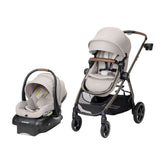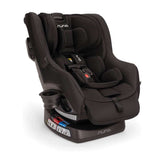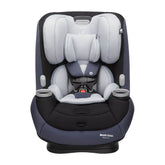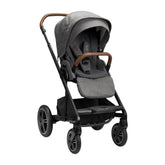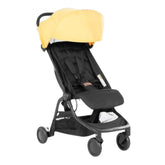Guidelines for How to Keep Your Child Safe at Home

It happens to nearly all parents: you take your eyes off your child for just a second, and suddenly your home is an obstacle course for a miniature Evel Knievel. Regardless of how watchful and attentive you may be when it comes to your little one’s safety, accidents happen. Fortunately, many are preventable. The more informed you are about childproofing your home and taking appropriate safety measures, the more secure your child will be (and the more peace of mind you’ll have, as well).
Accident-Prone Areas of the Home
Some of the most common causes of accidental home-injury deaths are fire and burns, suffocation, drowning, choking, falls, poisoning, and guns. There are a number of danger-zone areas around the home where accidents are more likely to happen. These include areas with:
- Water: in the kitchen, bathroom, pools, or hot tubs
- Heat or flames: outdoor barbecue grills and stoves
- Poisonous chemicals: beneath the kitchen sink, inside the medicine cabinet, inside a garden shed or garage or garden shed, or inside a purse (where medication may be located)
- The possibility for a fall: on stairs, slippery floors, from high windows, or from tipping furniture
- Choking hazards: dangerous bedding/sleep situations, certain foods (such as grapes or hot dogs), tiny coin-shaped batteries, and objects around the home that could ensnare or strangle a child
Safety Tips for Your Home
The National Safety Council and the American Academy of Pediatrics (AAP) offer a number of tips to maintain a safe home environment that protects not only your small child but your entire family.
1. Never, ever leave babies and toddlers unattended in a bath.
Most child drownings inside the home occur in bathtubs, and more than half of bathtub deaths involve children under 1 year of age. Babies can drown in as little as just one or two inches of water. It can happen silently and within seconds. Infants don't have much neck and muscle control. If even a small amount of water covers their nose and mouth, they won't be able to breathe. Use touch supervision. The AAP recommends having a towel and other bath supplies within reach so you can keep a hand on your baby at all times. If you forgot something or need to answer the door, bring your baby with you.

2. Install smoke and carbon monoxide (CO) detectors throughout your home.
Place at least one on every level and outside each bedroom, and test them monthly. Networked smoke detectors are ideal so that when one is activated, they all alarm.
3. Limit access to heat sources.
Place a screen in front of fireplaces, wood stoves, kerosene heaters, and other heat sources in your home to limit your child’s access and prevent burns. Electric baseboard heaters, radiators, and vents from hot-air furnaces may also get hot enough that they need to be screened as well.
4. Keep objects with “button batteries” out of reach.
These tiny round lithium batteries can quickly inflict life-threatening harm when inhaled or swallowed. Button batteries are in many common household items, like remote controls, key fobs, cameras, garage door openers, flameless candles, watches, toys, and hearing aids.
5. Evaluate furniture for tip-over risks and sharp edges.
Children can be seriously injured or even killed when they children crawl onto or pull themselves up on a heavy piece of furniture, such as a chest of drawers or a bookshelf. Place floor lamps behind other pieces and anchor heavy furniture to the wall. Keep television and computer cords beyond reach as well to prevent little ones from pulling the device down onto them or becoming trapped in the cords.
In addition, evaluate your furniture for any sharp corners or hard edges that could be hazardous. Take dangerous furniture out of the room completely if possible, especially if your little one is learning to walk. Investing in cushioned pads that stick onto the corners and edges of furniture may be especially helpful.

6. Scan floors often for potential choking hazards.
Get down on your hands and knees and look around from your little one’s perspective. Coins, beads, buttons, pins, pieces, parts of other small toys, and pills can cause choking or poisoning.
7. Use cordless window coverings.
Blinds or drapes with cords can strangle a child. Attach window covering cords to floor mounts that keep them tight, or wrap the cords around wall brackets to keep them well out of reach. Use safety stop devices and safety tassels on the cords.
8. Prevent falls from windows and stairs.
Install childproof window guards and only open from the top, if possible. Avoid placing furniture or anything a child might climb on in front of a window. Install safety gates (firmly mounted to the home’s studs) at the top and bottom of the stairs. Consider installing firmly tacked down carpet as well to prevent slips and falls.
9. Keep garbage out of reach.
Used razor blades, batteries, and rotten food can all be dangerous to a little one. Use trash containers with a child-resistant lid or keep them out of reach entirely.
10. Cover unused electrical outlets with non-choking hazard safety plugs.
This keeps children safe from electric shock by blocking access to the holes. You can also block some outlets with furniture. Place electrical cords out of sight and reach. Install ground-fault circuit interrupters where possible.

Safety 1st Outlet Cover with Cord Shortener
11. Dispose of all plastic bags.
These are particularly dangerous suffocation hazards, especially dry-cleaning bags. Tie a plastic bag in knots before tossing it in the trash (so a child can’t pull it over their head) and make sure no small pieces are left behind as a choking hazard.
12. Keep guns safely stored.
If you have firearms in the home, they should be locked and unloaded, with ammunition locked separately. Make sure children and teens are unable to access the keys or combinations to lock boxes or gun safes. Never keep loaded, unlocked guns in your car or anywhere else on your property.
13. Lock up potential poisons.
Cleaning fluids, medications, and alcoholic beverages can be extremely toxic to children. Put safety locks on cabinets where these items are stored. Don’t solely rely on childproof safety caps to keep kids out of a medicine bottle. It’s also critical to keep any edible marijuana products and liquid nicotine for vaping out of reach as well.
How Parents Can Prepare for Emergencies
If you're expecting a baby or already have children, it's wise to take a few additional preventative measures in case an accident does occur.
- Learn cardiopulmonary resuscitation (CPR) and the age-appropriate Heimlich maneuver.
- Save important, life-saving phone numbers in your phone (and make sure caregivers have these numbers saved as well):
- Poison Control: 1-800-222-1222
- Pediatrician's number
- Parents' work and cell phone numbers
- Neighbor's or nearby relative's number (if you need childcare in case of an emergency)
- Create a first-aid kit with emergency instructions inside.
You can make your home safer, but the most important safeguard is to monitor young children at all times. Even in a childproofed home, it only takes a moment for babies and toddlers to get hurt. Your vigilance is your child's best defense.

